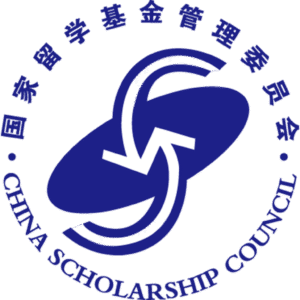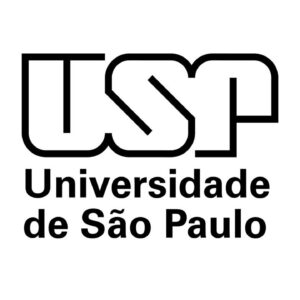Why this topic matters (and why you should read it)
If you’re a master’s or PhD student dreaming of turning an academic scholarship in China into a career at one of Shenzhen’s tech giants, you’re not alone. Many international scholars use the Chinese Scholarship Council (CSC) as the launchpad for a career in industry — and Shenzhen, with its dense cluster of hardware, software and EV companies, acts as the magnet.
This post breaks down how that pipeline actually works: from application to campus integration to internships and full-time hiring. I’ll explain the practical steps CSC scholars take, how companies like Huawei, Tencent and BYD recruit talent, and the tactical moves that transform a scholarship into a career. I’ll also drop two credible external resources where you can confirm scholarship details and company hiring info.
Quick links you’ll want to open now (embedded naturally in the text):
For official program and application information, see the Chinese Scholarship Council (CSC) site.
To explore employer roles and recruitment calendars, see Huawei Careers.
China CSC Scholarships: the academic springboard
What CSC scholarships cover (short version)
-
Tuition and academic fees (usually fully covered for full scholarships).
-
Monthly living stipend (amounts vary by degree level and location).
-
Medical insurance and sometimes travel allowances.
-
Placement or nomination to a Chinese university supervisor (for full-degree programs).
CSC scholarships come in different flavors (bilateral programs, university-specific scholarships via CSC, and short-term/summer research grants). For scholars who want to transition to industry, the full-degree CSC awards (master’s and doctoral) are the most relevant because they deliver deep academic and lab connections.
Why CSC scholars are attractive to Shenzhen employers
-
Technical depth: CSC-funded students often complete rigorous research or engineering projects.
-
Familiarity with Chinese systems: Even non-native students who study in China gain language and workplace familiarity that reduce onboarding friction.
-
University-company pipelines: Many Chinese universities have formal partnerships and joint labs with companies — a direct route into corporate R&D teams.
Shenzhen Tech Jobs: the opportunity map
Shenzhen hosts a broad technology ecosystem that spans:
-
Hardware and telecommunications (e.g., Huawei — network equipment, 5G R&D).
-
Internet platforms and gaming (e.g., Tencent — cloud, AI, social platforms).
-
New energy and EV manufacturing (e.g., BYD — batteries, vehicle engineering).
-
Startups and scaleups across robotics, AI, semiconductor design, and supply chain tech.
This diversity means CSC scholars with strengths from software and algorithms to embedded systems and materials science can all find fits. The story isn’t just about giant brand names; many scholars first enter through smaller Shenzhen R&D firms or joint lab projects before moving into larger corporate roles.
How the “scholarship → industry” pipeline actually works (step-by-step)
Below is a typical, practical progression many successful CSC scholars follow.
-
Application & placement (pre-arrival)
-
Apply for CSC full-degree scholarship and indicate potential universities/groups that have industry ties.
-
When evaluating supervisors, prefer those with joint projects or industrial funding from companies you target (research groups that list Huawei, Tencent, BYD, or Shenzhen partners are gold).
-
-
First year — orientation & credibility-building
-
Focus on coursework, lab rotations and joining collaborative projects.
-
Learn Chinese communication basics — this accelerates integration.
-
Attend university tech-industry events and career fairs.
-
-
Second year — internships and joint projects
-
Secure an internship (summer or semester) with industry partners, ideally through your supervisor’s network.
-
Aim to publish applied research or develop demonstrable prototypes that solve a product problem.
-
-
Final year — convert internship into job offer
-
Use internship performance and references to apply for graduate roles.
-
Prepare for Chinese-style interviews — expect technical screens and scenario-based questions.
-
-
Post-degree — probation & growth
-
Many hires enter as research engineers or algorithm engineers with scope to move between teams.
-
Build internal networks and show product impact to accelerate promotion.
-
Table — Quick comparison: CSC scholarship traits vs Shenzhen employer expectations
| Dimension | CSC Scholar (what you bring) | Shenzhen Employer (what they want) |
|---|---|---|
| Technical depth | Research projects, thesis, lab experience | Product-focused engineering, rapid prototyping |
| Language | Varies (many scholars have limited Mandarin initially) | Mandarin or bilingual preferred for cross-team work |
| Cultural fit | Familiarity with Chinese academic settings | Fast-paced, product-centric, agile development |
| Time horizon | Degree: 2–4+ years | Fast hiring cycles; expects immediate contributors |
| Network access | University professors, labs | HR, internal tech teams, recruiter pipelines |
| Mobility | May need work visa after scholarship | Can sponsor work permits for valued hires |
This table helps you see the gaps to close: translate academic outputs into product impact, and build language + company network fluency.
Tactical playbook — Convert scholarship credibility into job offers
Here are practical, tactical moves CSC scholars use. Use these as a checklist.
A. Choose supervisors with industry ties
-
Prioritize professors who list corporate collaborations, joint labs, or industry-funded projects. These supervisors can help place you in internships and may directly recommend you to corporate partners.
B. Focus on applied outputs, not only publications
-
Companies care about prototypes, reproducible experiments and code. When you write your thesis or lab reports, emphasize real-world performance, scalability, and product fit.
C. Secure internships early and treat them like long interviews
-
Internship performance predicts offer probability. Deliver beyond scope, volunteer for cross-team tasks, and collect references.
D. Learn workplace-relevant skills
-
For software/AI: production code, MLOps, cloud platforms, system design.
-
For hardware/semiconductors: PCB design, firmware, testing protocols.
-
For EVs: battery chem knowledge, systems engineering, manufacturing QA.
E. Build visible accomplishments
-
Maintain a GitHub repo with polished projects (for software/AI).
-
Create short demo videos or project one-pagers that explain the problem, your solution, and measurable results.
F. Master the hiring calendar and interview style
-
Chinese tech recruiting often includes algorithmic tests, system design interviews, and scenario-based behavioral rounds. Practice with peers and mock interviews.
G. Use university career services & tech talks
-
Attend company tech talks hosted on campus. These are low-pressure ways to meet recruiters and hiring managers.
H. Prepare visa & administrative steps ahead of time
-
After graduation you’ll generally need an employment-based work permit (Z visa). Many Shenzhen companies routinely sponsor international hires — confirm this early with HR.
Company-specific hiring notes (how Huawei, Tencent & BYD typically engage scholars)
Note: companies’ internal recruitment policies evolve. Use these notes as structural guidance — check company career pages and campus job notices for current openings. (See the embedded Huawei link for example job listings.)
-
Huawei — tends to hire for communications, wireless systems, cloud infrastructure and chip-related R&D. They recruit from universities via joint labs and technical internships. Scholars with telecommunications, signal processing, embedded systems or chip design skills are natural fits.
-
Tencent — centers on software engineering, cloud services, AI, and gaming. Tencent’s teams value product-minded engineers who can move from model prototypes to production at scale. CSC scholars with ML/AI backgrounds who can demonstrate production deployment stand out.
-
BYD — a leader in electric vehicles and batteries. Hiring focuses on power electronics, battery chemistry/management, vehicle systems engineering and manufacturing process optimization. Scholars with applied materials science, battery modelling, or power systems experience can join BYD R&D or engineering teams.
Two practical case-studies (composite and anonymized)
I’ve condensed common, anonymized paths I’ve seen students take — these are composites, not individual biographies.
Case A — From CSC PhD (Electronics) to Huawei research engineer
-
Joined CSC at a top Chinese university, selected a supervisor co-supervising a Huawei-funded lab.
-
Year 2: internship at Huawei R&D center in Shenzhen — worked on a 5G modem performance optimization task.
-
Deliverables: prototype firmware that increased throughput 8% for a specific use-case.
-
Outcome: full-time offer as a research engineer, then rotation to product team after 18 months.
Case B — From CSC MSc (AI) to Tencent Cloud engineer
-
Selected a university with an AI lab partnering with Tencent Cloud.
-
Contributed code to an open-source model serving project, completed a summer internship building model-serving pipelines at Tencent.
-
Outcome: graduate role in the machine learning platform team, focusing on MLOps and deployment.
Key takeaway: partnerships + internship performance + demonstrable project outcomes = strong conversion chances.
Common pitfalls CSC scholars should avoid
-
Overvaluing publications only. Publications matter but convert them into reproducible code and demos.
-
Underestimating language gaps. Even a basic Mandarin capability improves interview success and team fit.
-
Waiting too long to network. Start attending company talks and career fairs in Year 1 or 2.
-
Treating internships as side projects. An internship is often the decisive audition for a full-time offer.
Campus tactics that actually work (list format for scanning)
-
Attend faculty/industry mixers and ask about ongoing projects that accept intern help.
-
Volunteer to be a technical liaison between your lab and company partners (this gives visibility).
-
Organize short workshops or demos where you present your project to the company reps — show business impact.
-
Translate your research into a one-page “product impact” summary that recruiters can quickly read.
-
Keep a polished LinkedIn and a bilingual resume (English + Chinese) tailored to each company role.
-
Practice whiteboard/system design interviews with peers — not just coding problems.
-
Apply for short industrial placements or cooperative education terms if the university offers them.
Sample 90-day plan for a CSC scholar who wants a Shenzhen tech job
Days 1–30
-
Map supervisors with industry funding.
-
Draft a 6-month applied project plan aligned with industry needs.
-
Create/upate GitHub and LinkedIn.
Days 31–60
-
Reach out to potential industry contacts through your supervisor.
-
Attend at least two company tech talks or HR sessions.
-
Start Mandarin practice focused on workplace phrases.
Days 61–90
-
Apply for summer internship positions; prepare technical interview practice.
-
Build a 2-minute demo video of your ongoing project.
-
Identify at least 2 references who can vouch for your engineering impact.
How to position your CSC scholarship on a resume and in interviews
-
Resume: Put CSC scholarship as a credential under education with dates and a short parenthetical: “(Chinese Government Scholarship – full degree award)”. Immediately follow with a 2-line description of your applied projects and quantifiable results.
-
Cover letter/intro: Emphasize your cross-cultural adaptability, language progress, and any collaborative projects with industry partners.
-
Interview: Translate thesis contributions into “problem — my solution — measurable impact” statements. For example: “The problem was X; I built Y; performance improved by Z% which matters because…”
Networking & recruiter outreach — templates that work
Use short, targeted messages. Example (for LinkedIn or recruiter email):
Hi [Name], I’m a CSC-funded MSc/PhD student at [University] working with Prof. [Name] on [applied topic]. We’ve been collaborating with industry on [brief], and I’m keen to contribute to [team or product]. Could we schedule a 15-minute chat about internship opportunities or an upcoming graduate intake?
Personalize by referencing a company talk or an article about company projects.
The language question: how much Mandarin do you need?
-
Minimum: Basic workplace phrases and reading technical documentation. This is often enough for technical teams with English capability.
-
Recommended: Conversational Mandarin (HSK 4–5) if you want smoother cross-team collaboration and career advancement.
-
How to get it: Intensive language courses, language partners, and daily practice for technical vocabulary.
Visa & work authorization basics (practical notes)
-
Most international graduates are hired on employment (Z) visas or resident permits sponsored by employers.
-
Companies used to hiring international talent (many Shenzhen tech firms) can sponsor and guide you through the process. Confirm sponsorship before accepting offers.
-
Keep documentation ready: degree certificate, passport, health checks, and any university-issued recommendation letters.
Measuring success — metrics to track during your scholarship
-
Number of industry contacts / meaningful conversations.
-
Number of internship applications submitted vs interviews secured.
-
Number of demonstrable project outputs (prototypes, PRs, deployable code).
-
Language progress milestones (HSK targets or equivalent).
-
Offers received and conversion rate from internships to offers.
Track these monthly and adapt actions accordingly.
Final checklist before you graduate
-
Completed at least one industry internship or collaborative project.
-
Bilingual resume and LinkedIn page updated.
-
One productized demo or deployed prototype.
-
At least two references who can speak to your industry readiness.
-
Understanding of the hiring timeline for your target companies.
-
Clarified visa sponsorship expectations with prospective employers.
Parting advice — humanizing the journey
Remember: this transition is not purely transactional — it’s human. Companies hire people, not credentials alone. Your curiosity, willingness to learn Chinese workplace norms, humility in accepting feedback during internships, and an ability to show how research solves business problems will get you farther than technical depth in isolation.
If you’re worried about cultural fit or interview style, treat your internships as extended learning experiences where you can practice soft skills, not just technical ones. Be patient: many scholars don’t go straight to a Tencent or Huawei role the day after graduation. They often take strategic steps — smaller company roles, contractor stints, or internal rotations — that lead to senior opportunities later.
Two useful official starting points (embedded links)
-
Chinese Scholarship Council — for official scholarship application and program details.
-
Huawei Careers — for examples of job functions and recruitment cycles typical of Shenzhen R&D employers.
Call to action
If you’re a CSC scholar or applying for one and want a personalized 90-day action plan tailored to your discipline (AI, telecom, hardware, EVs), tell me your degree level and field and I’ll draft one you can follow step-by-step. No more guesswork — just an actionable roadmap.
Appendix — sample resume bullet examples (industry-focused)
-
“Designed a lightweight model-serving pipeline for edge devices; reduced inference latency by 30% while maintaining 95% model accuracy.”
-
“Implemented firmware upgrade mechanism for embedded modem prototype; validated across 3 hardware revisions.”
-
“Led battery cell thermal analysis experiment and produced thermal-management recommendations that reduced peak temperature by 7% in lab tests.”
Use numbers and outcomes whenever possible.
Closing thought
Scholarship → industry is a predictable pattern if you treat the scholarship as a strategic incubator, not just free tuition. With targeted networking, internships that solve real product problems, and the language + cultural readiness to integrate into Chinese workplaces, CSC scholars can and do move into top Shenzhen firms — often bringing powerful cross-border perspectives that make them especially valuable.





